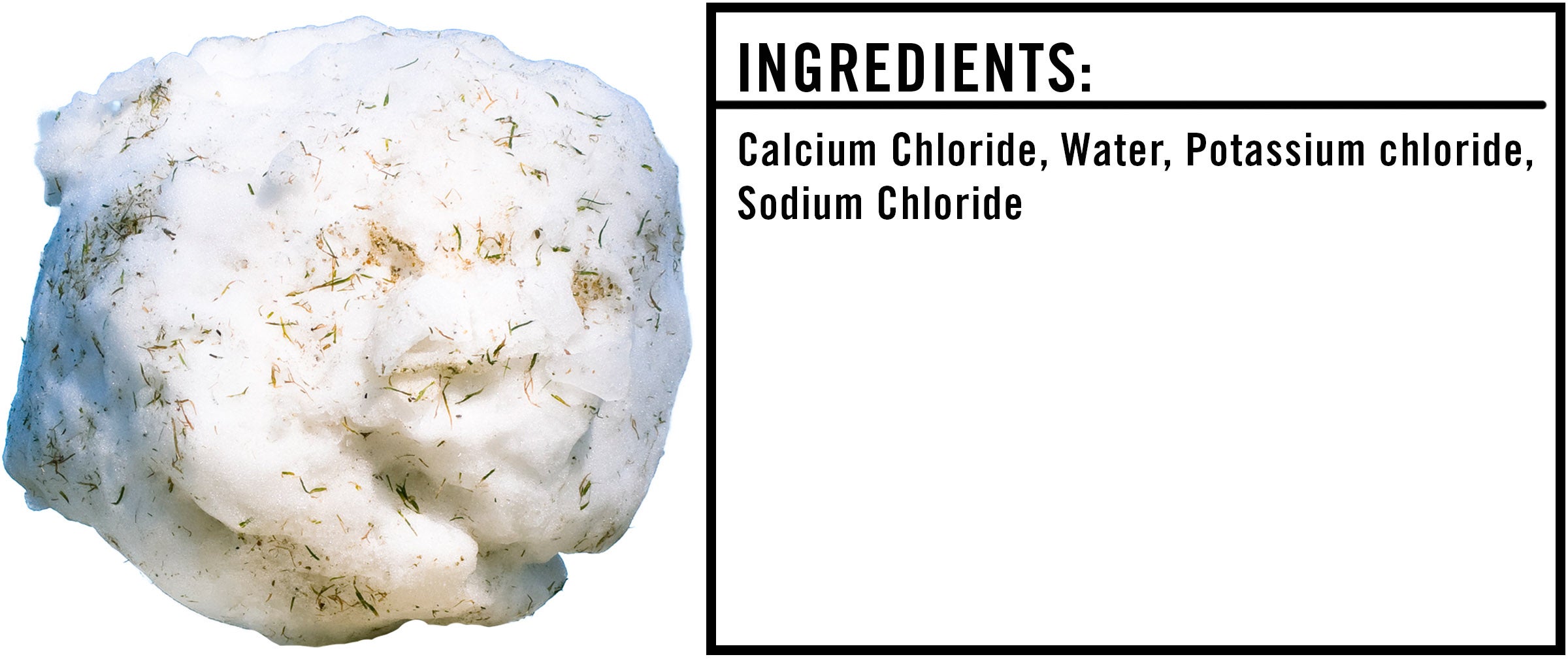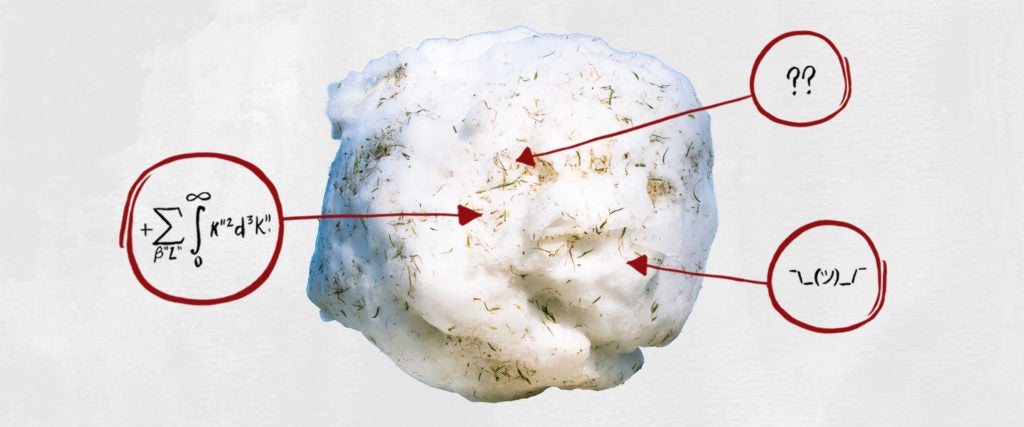We’re often told that you should never eat anything (or put anything on your body) if you don’t recognize everything on the ingredients list. But since most of us have no idea what xanthan gum or potassium benzoate are — or more importantly, what they’re doing to our bodies — we’re decoding the ingredients in the many things Americans put in (and on, or near) themselves.
This edition: Pellets of Fire Snow and Ice Melter, which is made from four separate ingredients that we’ve broken down as they appear online.

The Ice Melter Ingredients
1) Calcium Chloride: The primary ingredient in Pellets of Fire, calcium chloride is a type of salt that lowers the freezing point of water — salt makes it harder for H2O molecules to bond together and become solid — which means it can’t freeze at 32 degrees Fahrenheit anymore. In fact, calcium chloride can prevent freezing at temperatures as low as negative 62 degrees Fahrenheit. Then, that non-freezing water can help melt the frozen tundra known as your driveway. As an added bonus, calcium chloride is totally safe for concrete.
Table salt has a similar effect on the freezing point of water, however, chloride has hygroscopic properties that attract moisture from its surroundings, and more moisture that won’t freeze helps ice melt quicker. Unfortunately, chloride is also terrible for the environment, killing aquatic animals and altering soil composition, which makes it harder for vegetation to grow. It can also irritate your eyes, skin and airways in excessive amounts, so definitely don’t make a snow angel in this stuff.
2) Water: More water to help melt ice so you don’t end up like this guy:
3) Potassium chloride: According to the label, this is an impurity, not a main ingredient. It’s another salt that can help melt ice, although not at the extreme levels that calcium chloride can: It only works at above 25 degrees Fahrenheit.
4) Sodium Chloride: Another impurity, sodium chloride is a basic salt that again has some minor ice-melting properties.
The Takeaway
The big problem with ice melters is what they do to the environment, and unfortunately, we don’t really have a greener alternative that’s as effective. So, use them as needed, but maybe consider pulling out the shovel if you’re only dealing with a small pile of snow.

